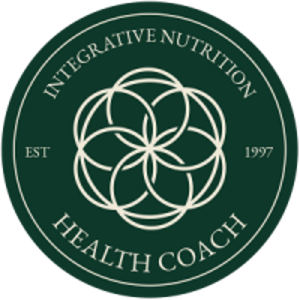Consequences of Our Love Affair with Sugar
The U.S. Department of Agriculture estimates that the average American consumes more than 135 pounds of sugar each year. That’s about 32 teaspoons of sugar each day for every person. What is behind this affair with sugar?
The Difference between Sugar and Starches
SUGAR
The sugar category includes all refined sugars and syrups. These are glucose (or dextrose), fructose (or levulose), and galactose; double sugars: sucrose (table sugar), maltose (in beer), and lactose (in milk); dextrins and dextrans and syrups made from sugarcane, sugar beets, sorghum, honey, and maple. Our body digests and rapidly absorbs these concentrated sources of sugars and quickly turns them into saturated fatty acids.
STARCHES
Starches are sugar (glucose) molecules bonded together. Enzymes in our body must break the bonds between glucose molecules, gradually turning digested starches into glucose, the primary fuel for all cells in the body. Starches are preferable to sugars because they are digested more slowly.
They contain co-factors that enable our bodies to completely burn them for energy. Whole grains are also rich in vitamins and minerals. Sweet fruits contain starches but also a large amount of sugar and can lead to fat production when they form more than a small part of your diet. Wild animals such as bears eat the fruit in the fall in order to build up fat for the winter. When we eat sweet fruit year round we can get fat from it, year-round.
Scary Health Problems from Sugars
Refined sugars need not be digested and are absorbed quickly. Glucose floods our blood and cells. High blood glucose is a dangerous situation that can result in diabetic shock.
Our body deals with excess glucose in two ways:
Our body stores it as fat for use in future times
It spills excess glucose into our urine (a common symptom of diabetes)
Our body uses this second method only if the first method fails. Nature did not equip our bodies to deal with continual excess. If we have made bad food choices, stuffed ourselves with refined sugars, or overloaded on glucose, our body responds in the following way:
High blood glucose triggers our pancreas to secrete Insulin, which moves glucose into our cells. Here glucose is fed into the energy-producing (Krebs) cycle within the mitochondria of our cells. Glucose in excess of our cell’s energy requirements stimulates the production of fatty acids.
Three fatty acids hooked into a glycerol molecule make a fat molecule called Triglyceride. Then fat molecules are deposited in our cells and organs or transported by our blood to fat tissues for storage, which leads to cardiovascular disease.
Understanding Refined Sugars and Disease
Refined sugars are digested and absorbed into our bloodstream with uncanny speed and, consequently, raise blood glucose levels too high. This is hyperglycemia, one symptom of diabetes. Insulin removes excess glucose from our bloodstream, and our glucose levels may fall too rapidly.
When blood glucose falls too low our adrenal glands kick in to mobilize the body’s stores of glycogen. A diet of refined sweets catches our pancreas and adrenal glands in a biochemical see-saw, overworking them.
Refined sugar passes into the bloodstream in large amounts, giving the stomach and pancreas a shock.
There is also an alkaloid effect, which gives the user an approximate 90-minute high that ends with a dramatic drop in brain functionality. A resulting acidic condition is then created in the body, and it consumes the body’s minerals quickly as it works to balance itself.
Our metabolism is directly affected when consuming the deadly substance in exceptional quantities. When we alter metabolic rates by manipulation of chromium (the most pivotal nutrient involved in metabolizing sugar), our organ systems begin to malfunction. The organ of greatest concern is the brain. Precious neurons are affected, and this action creates a scatterbrain effect.
From Food to Mood: The Desire for Sweets Hard-Wired in the Brain?
Richard Wurtman, Ph.D., a professor of brain and cognitive science at the Massachusetts Institute of Technology at Cambridge says that some people crave sweets not because they lack willpower but because of an imbalance in serotonin. This theory is supported by evidence that obese people and people who crave sweets often have lower serotonin levels than lean people or people who prefer protein-rich snacks.
Their extra low serotonin levels leave them feeling anxious, irritable and craving a serotonin fix. In essence, “cravers” turn to sweets to relieve dwindling energy levels, hunger, depression, and stress brought on by their low serotonin levels. Cravers are rewarded each time they indulge their cravings because the food increases serotonin levels and makes them feel better.
How Sugar Weakens Us: The Outcome of Sugar Consumption
Fewer and weaker cells are developed in the pancreas (the sugar regulator) and spleen (the cell developer) when any form of sugar saturates the bloodstream.
Sugar increases calcium loss in urine, sparking further osteoporosis concerns and arthritis.
The digestive system is weakened and food cannot be digested or assimilated properly. This leads to blood sugar imbalances and further sugar cravings.
Sweet food acidifies the blood, destroys vitamin B and other vitamins, and depletes the body of many minerals.
Insulin increases inflammation in the body.
Saturated fatty acids from sugar decrease oxygen supply to our tissues (hypoxia): red blood cells stick together, and become less mobile and, hence this lessens their ability to deliver oxygen to the cells.
Sugars inhibit the functions of our immune system and increase diseases caused by poor immune function, such as colds and flu.
Sugar supports the development of food allergies.
Sugar increases the body’s production of adrenaline which puts the body into a fight or flight stress. This increases the production of Cortisone and Cholesterol.
Sugar induces cavities, and causes dental degeneration and hard tissue degeneration.
Sugar raises triglycerides (blood fat) which lowers immunity.
Too much sugar can foster obesity.
Sugar is a vitamin and mineral robber because it lacks the vitamins and minerals required for its own metabolism. So, it draws from our body’s own storehouse of these nutrients. Now our bodies cannot metabolize fats and cholesterol.
Sugar feeds Candida (yeast), fungi, other pathological organisms (toxin-producing), and cancer cells.
Sugar interferes with the transport of vitamins and minerals because they both use the same transport system.
High blood sugar inhibits the release of linoleic acid from storage fat tissues and thereby contributes to essential fatty acid deficiency.
Sugars are low in fiber which slows down the speed at which food passes through the digestive tract. They remain in the colon too long and serve as food for harmful bacteria that produce gas and toxins, causing our colon to become inflamed (diverticulitis).
Lack of fiber causes constipation, toxin re-absorption, hemorrhoids, varicose veins, and worst of all liver weakening.
Some Sweet Consciousness Suggestions
Prepare meals at home to avoid sugar in restaurants and manufactured food.
Read labels. Sugar and chemical sweeteners are in almost everything. Although manufacturers are not required to list the percentage of sugar calories, you can get an idea of the sugar content by reading the ingredients list. Food may be too sweet if one of the first three ingredients is sugar or if the list includes several sources of sugar.
Be aware of so-called natural sweeteners. Fructose, brown sugar, and turbinado sugar. They are nearly as refined as white sugar.
Add sweet vegetables. Beets, carrots, winter squashes, sweet potatoes, and parsnips for dessert or in desserts. Raw carrots are especially helpful for sugar cravings.
Find alternative ways to sweeten desserts. Fruit juices, rice syrup, barley malt, stevia, molasses, and amasake are great for this.
Use sprouts or sprouted products—sprouting changes starch to sugar.
Eat something sour, pungent, or spicy to diminish cravings.
Cravings can be caused by hyperactivity. This often results from a lack of exercise or eating too quickly, or an excess of meats and refined foods.
Balance your yin-yang intake. Salty foods such as sea salt, pickles, and soy sauce create a craving for sweets as well as most animal foods and cheeses.
Sweet without Sugar
Apple juice concentrate and pureed fruits such as bananas, apples, and prunes can be used to replace some of the fat and sugar in recipes. When you omit or reduce the sugar, honey, or other sweeteners, you can add sweetness with one of the following spices or with extracts that provide a sweet flavor, such as vanilla, almond, and cherry.
Allspice. Use to season baked products such as muffins and bread. Also, use it in vegetables such as carrots, winter squash, and sweet potatoes.
Anise. These seeds give bread and desserts a unique licorice flavor.
Cardamom. The unique flavor of this spice is good in curries or to flavor winter squash, sweet potatoes, bread, cakes, and cookies.
Cinnamon. Use the sticks to give a spicy flavor to hot beverages; use ground cinnamon in baked goods, fruit sauces, stews, and puddings. Also, with carrots, sweet potatoes, and baked apples.
Cloves. The most aromatic spice, it adds flavor to hot beverages, beets, carrots, sweet potatoes, winter squash, baked goods, meats, stews, and soups.
Coriander (also called cilantro). Fresh coriander has a sharp, citrus-rind flavor that is good in salads and spicy casseroles, soups, and stews. The ground seeds impart a nutty flavor to rice, dried beans, shellfish, poultry, vegetables, salsa, and salads.
Ginger. The fresh root is peeled and grated to add spice to marinades with steamed vegetables, chicken, or fish. Use ground ginger in baking and marinades, rice dishes, soups, and in preparing carrots, beets, and squash.
Mace. Similar in taste to nutmeg but milder (it is the fibrous covering on the nutmeg seed); this spice enhances the flavor of broccoli, carrots, cauliflower, Brussels sprouts, baked goods, and puddings.
Mint. Choose from more than thirty types of mint (fresh is the most flavorful and sweet) to enhance grains, vegetable and fruit salads, iced teas, peas, corn, beans, cucumbers, carrots, and potatoes.
Nutmeg. A nutty, versatile spice that brings out the best in spinach, broccoli, cauliflower, carrots, Brussels sprouts, onions, beans, and sweet potatoes; excellent in sauces, pasta, stews, and low-fat desserts.
Pumpkin Pie Spice. A blend of nutmeg, cinnamon, cloves, and ginger adds a sweet flavor to winter squash, sweet potatoes, and carrots, as well as fruit desserts such as baked apples.
Conclusion
From what we have learned we can see that sugar causes a plethora of both physical and emotional disorders. However, I believe that by regulating and balancing different foods in our diet, we can successfully manage our urge for too many sweets. There is a time and a place for our favorite sweets.
The best time is when you allow yourself to enjoy them on a special occasion, and with the people you love. Also, use quality alcohol-free pure herbal extracts to promote a healthy immune system.
The following day, after sweets, get back on track with some alkalizing foods (like all green vegetables and green drinks). Then you’ll be in the healthy zone again, I promise!
REFERENCES:
Nourishing Wisdom, by Marc David
Healing with Whole Foods, by Paul Pitchford
Food and Mood, by Elizabeth Somer, R.D.
Food: Your Miracle Medicine, by Jean Carper
Fats that Heal, Fats that Kill, by Udo Erasmus
“False Foods,” Hippocrates Magazine Volume 26, Issue 4, by Brian Clement, Ph.D.


